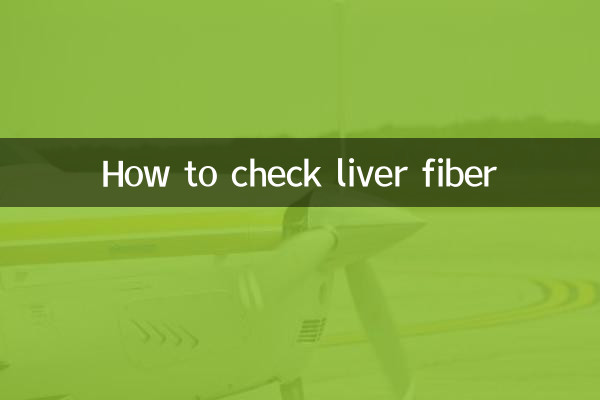How to check liver fiber
Liver fibrosis is a critical stage in the development of chronic liver disease. Early detection and intervention can effectively prevent the disease from progressing to cirrhosis or liver cancer. The following are liver fibrosis examination methods and related hot topics that have been hotly discussed on the Internet in the past 10 days. They are analyzed in detail based on medical guidelines and the latest research.
1. Common examination methods for liver fibrosis

| Check type | Specific methods | Features | Applicable people |
|---|---|---|---|
| Non-invasive examination | FibroScan (transient elastography) | Fast, painless and reproducible | Routine screening of patients with chronic hepatitis |
| Hematology tests | APRI, FIB-4 score | Low cost, needs to be combined with liver function indicators | Physical examination initial screening population |
| Imaging examination | Ultrasound elastography, MRI | High accuracy, high equipment requirements | Patients who need clear staging |
| Invasive examination | liver biopsy | Gold standard but with risk of trauma | Severely ill patients with unclear diagnosis |
2. Recent hot technology progress
1.AI-assisted diagnosis system: Many hospitals recently reported using artificial intelligence to analyze ultrasound images, and the accuracy of fibrosis staging reached over 89%.
2.Novel serum markers: Matrix metabolism indicators such as TIMPs and MMPs have become research hotspots, and some tertiary hospitals have carried out joint testing.
3. Inspection Precautions
• Fasting is required for 8-12 hours before the examination
• Patients with chronic hepatitis B are recommended to re-examine every 6 months
• People with abnormal liver function need to make comprehensive judgments based on multiple indicators.
4. Inspection suggestions at different stages
| risk level | Recommended inspection | Follow-up frequency |
|---|---|---|
| low risk | FIB-4 score + ultrasound | 1 time per year |
| medium risk | FibroScan+Serology | every 6 months |
| high risk | Liver biopsy + MRI | According to medical advice |
5. Comparison of typical case data
| Case type | ALT(U/L) | FibroScan(kPa) | Biopsy results |
|---|---|---|---|
| mild fibrosis | 45-80 | 7.2-9.5 | F1-F2 |
| moderate fibrosis | 80-150 | 9.6-12.4 | F2-F3 |
| severe fibrosis | >150 | >12.5 | F3-F4 |
6. Health Advice
1. People infected with hepatitis B/C should undergo regular fibrosis assessment
2. Controlling weight and blood sugar can delay the progression of fibrosis
3. Avoid drug abuse and alcohol intake
Note: The specific examination plan needs to be formulated by a specialist based on individual circumstances. The data in this article are synthesized from the latest guidelines in 2023 of the "Chinese Journal of Hepatology" and the clinical practice reports of tertiary hospitals.

check the details

check the details